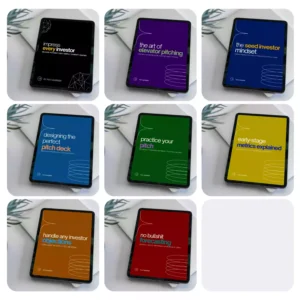“`html
TL;DR
Validating your business idea involves understanding customer needs, redefining assumptions, interacting with potential customers, and making necessary adjustments to ensure market fit before launching.
Introduction
Embarking on a journey to transform your bright business idea into a captivating startup can be exhilarating. However, it’s not only about enthusiasm; it requires diligent validation to ensure that your concept resonates with your target audience. Let’s delve deeper into validating your business idea with a comprehensive checklist tailored for startup founders.
Define Your Startup Idea Clearly
Clarity is paramount when defining your startup idea. Start by articulating what your business idea is all about. A well-defined vision acts as the foundation of your startup pursuits.
Consider crafting a concise statement that encapsulates your business concept and its potential impact. Understand the purpose of your startup and the problem it aims to solve.
For example, if your startup revolves around eco-friendly packaging, clearly articulate how your product is innovative and why it stands out in the market.
Identify and Understand Customer Problems
Identifying the pain points your potential customers are experiencing is a critical step in validation. With a keen understanding of their problems, you can tailor your solution accordingly. Engage in market research to collect valuable insights.
Consider questions like: What frustrations do they encounter daily? How does the current solution fall short? Through surveys, focus groups, or even casual conversations, dive into the world of your target audience.
Build Relationships with Potential Customers
Fostering relationships with potential customers is invaluable. Engage openly to gather feedback. Incorporate their insights into refining your idea.
Continuous interaction helps you gauge demand and interest in real-time. Listen actively, show empathy, and be responsive. A relationship grounded in trust can yield candid and helpful insights.
List and Revise Assumptions
Assumptions form the cognitive blueprint of your business idea. List them down methodically, covering diverse facets such as customer behaviors, market dynamics, and technology feasibility.
It’s essential to remain flexible; as you interact with the market, revise and update these assumptions. For instance, if you assume a demographic prefers mobile apps, validate this through feedback before extensive development.
Create and Test Hypotheses
Building and testing hypotheses about your target market gives structure to otherwise vague assumptions. Develop hypotheses surrounding who your audience is and their specific needs.
Testing these hypotheses in controlled environments can be revealing. For example, if you’re hypothesizing that millennials will prefer an app over a web platform, create prototypes and gather tangible feedback.
Estimate Funding Needs and Iterate
Financial projection and funding estimation are crucial steps in the validation process. Establish a preliminary budget encompassing projected costs, including production, marketing, and operating expenses.
This may also involve looking at different funding sources, from crowdfunding to venture capital. Each requires an understanding of your financial landscape and a demonstration of your idea’s viability.
Based on the financial response and market feedback, you may need to pivot your idea. Adaptability in strategy ensures that your startup remains relevant and viable.
Questions to Ponder
- Have you thoroughly defined your startup idea and addressed potential gaps in clarity?
- In what concrete ways have customer interactions influenced your assumptions and approach?
- Are you regularly validating your hypotheses with real market experiments?
- How do you adjust your strategy based on financial constraints and market feedback?
- What contingency plans do you have for unforeseen challenges in the validation process?
Conclusion: Moving Forward
Your journey in validating a business idea is as much about learning as it is about proving viability. Use this structured approach to transform your conceptualization into tangible insights. Be adaptable and responsive to both direct feedback and market trends.
Armed with validation outcomes, you can step forward with greater confidence. Let this process fuel your entrepreneurial spirit and lead you toward an impactful startup launch. Be prepared, be perceptive, and always keep your customer at the heart of your scheme.
“`





